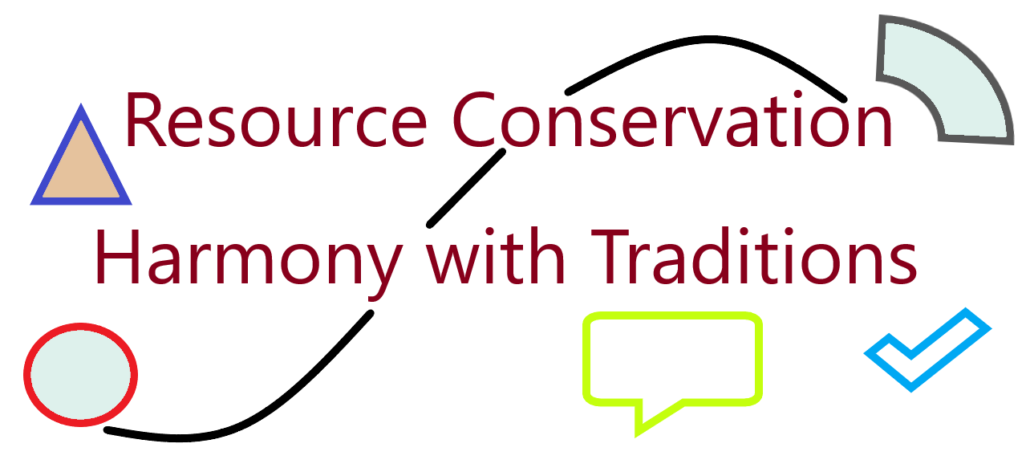Human habitat refers to the environment where people live, including the physical structures, communities, and ecosystems that make up their surroundings. It encompasses a wide range of settings, from rural villages to urban cities, and includes various types of housing, infrastructure, and natural elements. The concept of human habitat involves not only the physical aspects of living spaces but also the social, cultural, and economic dimensions that shape people’s daily lives.
Two Primary Goal of Human Habitat

Resource Conservation
Resource conservation is crucial in the context of human habitats. As the global population continues to grow, and urbanization accelerates, the demand for resources such as land, water, building materials, and energy has significantly increased. Sustainable design practices are becoming increasingly important to ensure the long-term viability of human habitats
Preserving resources not only diminishes reliance and exploitation across different regions and nations but also fosters the restoration of a robust sense of local and regional identity, authenticity, and the creation of meaningful urban living environments.
Harmony with Traditions
Designers and planners are often more aligned with a universal professional culture than the local cultures they design or plan for. Their connection to a culture without a specific sense of place and a lack of understanding of the local context have rendered them unconscious of their own cultural origins. Contemporary designers and planners lack a satisfactory philosophical foundation for their planning endeavors. Consequently, they find themselves susceptible to forces beyond their control, lacking a guiding ideology and convictions rooted in a strong cultural heritage.
We firmly advocate that the planning and design profession in India should seek an ideology rooted in the traditional settlement design practices of this subcontinent. Beyond merely replicating physical elements, it is the comprehension of the underlying philosophy behind these traditional design approaches that should constitute an integral part of the designers’ core values.
Goals: Planning and Architectural Interpretations
While the foundational goals of Resource Conservation and Harmony with Traditions serve as the cornerstone for developing a design philosophy, it is imperative to delve into more specific objectives to enhance habitat quality. The key considerations in this pursuit include Livability, Accessibility, Cultural Appropriateness, and Imageability.
- Livability:
- Ensuring a high standard of living for residents by creating environments that are comfortable, aesthetically pleasing, and supportive of well-being.
- Incorporating features such as green spaces, recreational areas, and community facilities to enhance the overall quality of life.
- Human habitat should be a place where everyone can live in reasonably safe and hygienic environment devoid of nuisance such as noise, danger and air pollution.
- Dwellings should have physical, thermal and optical comforts and must be provided with adequate space and basic utilities, services and amenities necessary for healthy life.
- Accessibility:
- Designing habitats that are easily accessible to all members of the community, irrespective of age or physical ability.
- Implementing inclusive infrastructure, such as ramps, elevators, and accessible pathways, to facilitate mobility for everyone.
- Cultural Appropriateness:
- Recognizing and respecting the cultural identity of the community in the design process.
- It is essential to incorporate a vernacular aesthetic that allows individuals to connect with and identify themselves within their built environment. This involves integrating architectural elements, design motifs, and materials that resonate with the local culture, reflecting a sense of identity and belonging.
- By honoring and expressing the unique characteristics of the community’s cultural heritage, the habitat becomes a canvas for self-identification, fostering a deeper connection between individuals and their surroundings.
- Imageability:
- Creating distinctive and memorable urban environments that foster a strong sense of place and identity.
- Incorporating iconic landmarks, unique architectural features, and a cohesive visual identity to make the habitat easily recognizable and memorable.
These specific goals go beyond the broad principles and provide actionable points for designers and planners to consider in their quest to enhance the quality of human habitats. By addressing Livability, Accessibility, Cultural Appropriateness, and Imageability, the design philosophy can become more nuanced and responsive to the diverse needs and aspirations of the communities it serves.
Home page : Planning and Design Practice Code